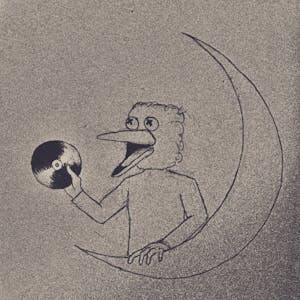I have a terrible backlog on my hands. There are at least 20 unread books on my shelves and twice that many on my bucket list (or there would be, if I faced my mortality and made one.) My film backlog is even worse. I have yet to see "Blade Runner: 2049," because I have been waiting for the past eight months to watch the original first.
Another film I plan to watch someday is "Arrival." Linguistics is a longtime interest of mine, yet I cannot recall ever seeing a movie thats plot is based on linguistic theories, especially not linguistic relativity, the idea that a language colors its speakers’ worldview. I did, however, read a book on it about this time last year. I will not name the book-that might be a call to action-but I can write about it. The author argued that while there is some truth to the idea that language influences culture, the opposite is more common—especially with the linguistics of color.
In the nineteenth century, British philologist William Gladstone noticed that Homer never calls the sea “blue” in "The Iliad" or "The Odyssey;" it is always “wine-dark”. Further investigating the use of color in the epics, he concluded from the rhapsode’s limited color vocabulary that the ancients were colorblind. Seizing on this idea, researchers investigating non-European languages turned their attention to color. They found that most color vocabularies were smaller than those of Europe, as in the Siberian language Chukchi, which only distinguishes between nukin (black, dark colors), nidlikin (white, bright colors) and tschetlju (red, warm colors). Vision tests yielded, however, no evidence of widespread colorblindness among these peoples. One subject from Murray Island near Australia agreed that leaves and the sea had different shades, but he insisted they were two different shades of the same color.
These studies revealed a hierarchy of colors among the world’s languages. While every language had words for black, white, and red, only the most technologically advanced cultures had separate names for blue and violet. This is because of differences in the availability of pigments for these colors. Black, white, and red can easily be made from clay, readily available worldwide. Green and yellow come next. Blue and violet, which often require rare minerals or large numbers of fruit or snails to produce, come last. These last two are scarce in nature. Prior to the introduction of synthetic pigments, someone who lived in a place with no purple butterflies or flowers might never have seen violet except in the evening sky.
Japanese is one modern example of color vocabulary development. When over two centuries of Japanese isolation policy ended in 1853, the language did not distinguish between blue and green as colors; both were shades of aoi. This combined designation persisted through the turn of the century, about the time traffic lights were introduced. At the time it was reasonable that green lights would be called aoi shingou, but the Japanese have since come to consider midori (green) a separate color, rather than a shade of aoi. Instead of referring to green lights as midori shingou, Japan has maintained the old name and made the lights as blue as possible without violating international traffic safety codes.
This all has more to do with technology that worldviews, so it does no really concern linguistic relativity. Even if many linguists doubt the validity of linguistic relativity, it make for interesting science fiction. Perhaps someday I will get around to reading some of it.


